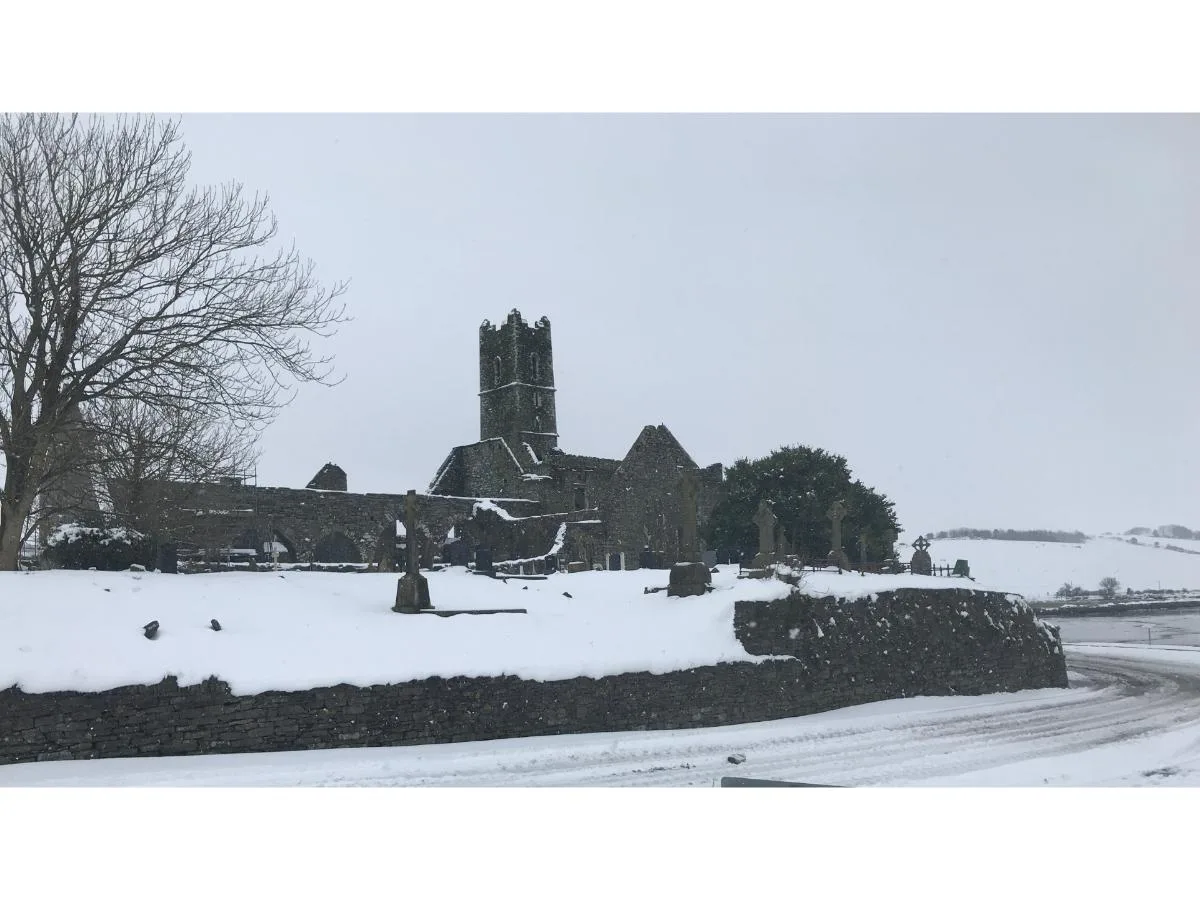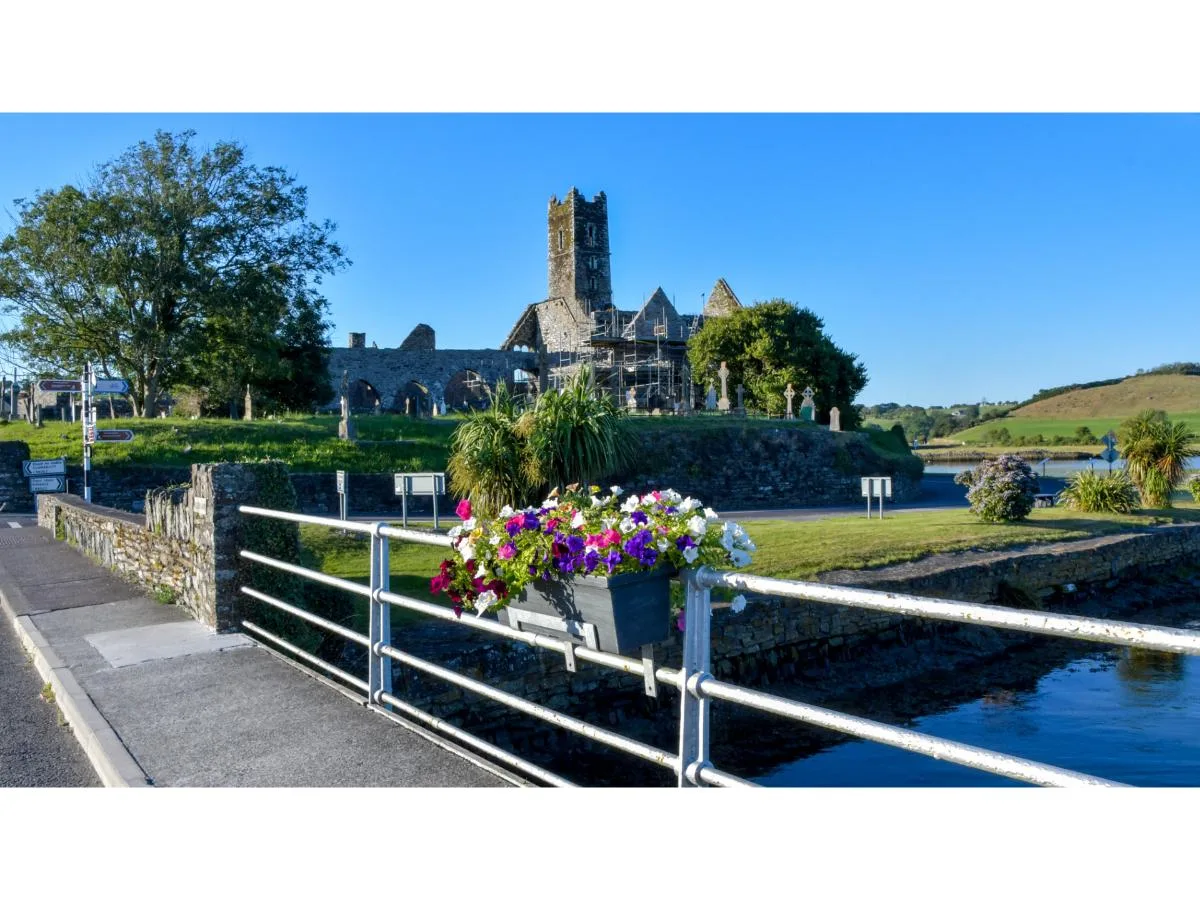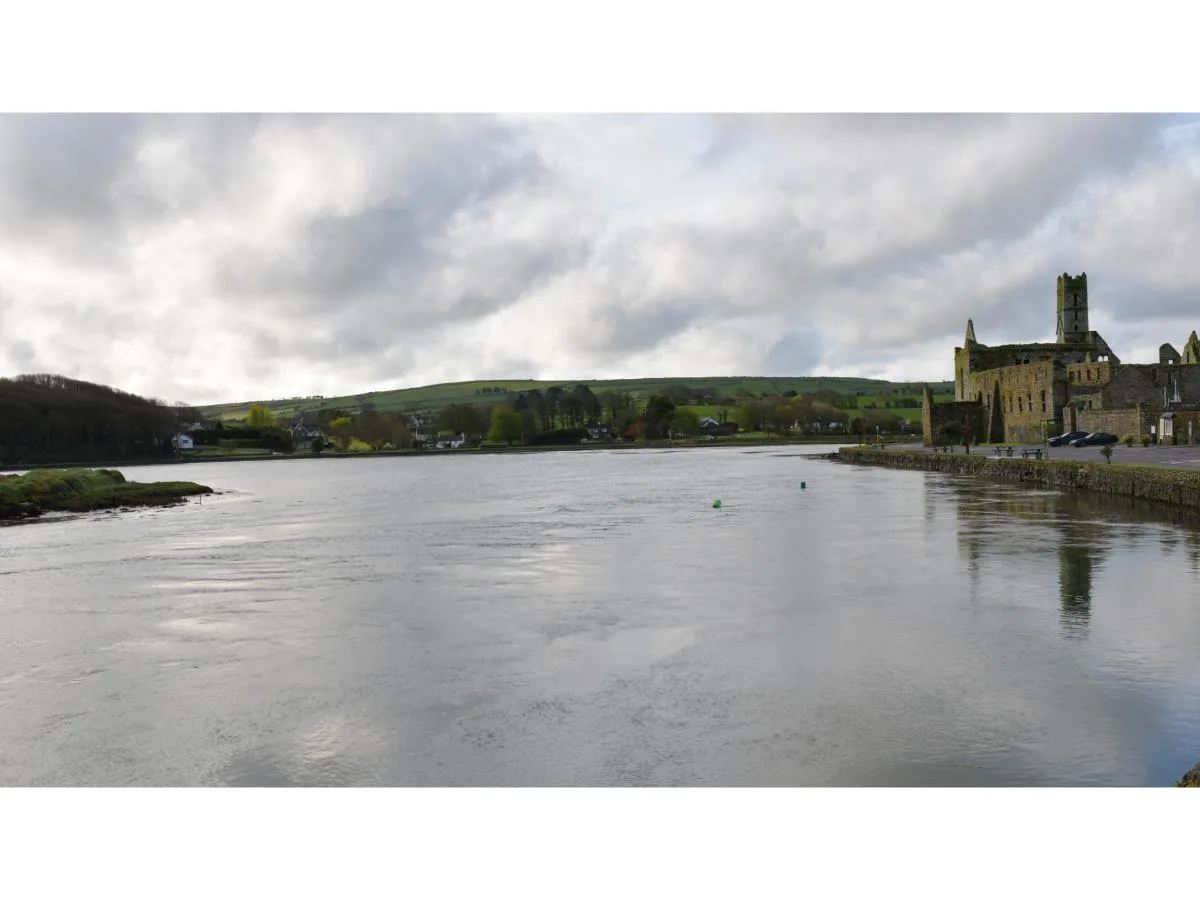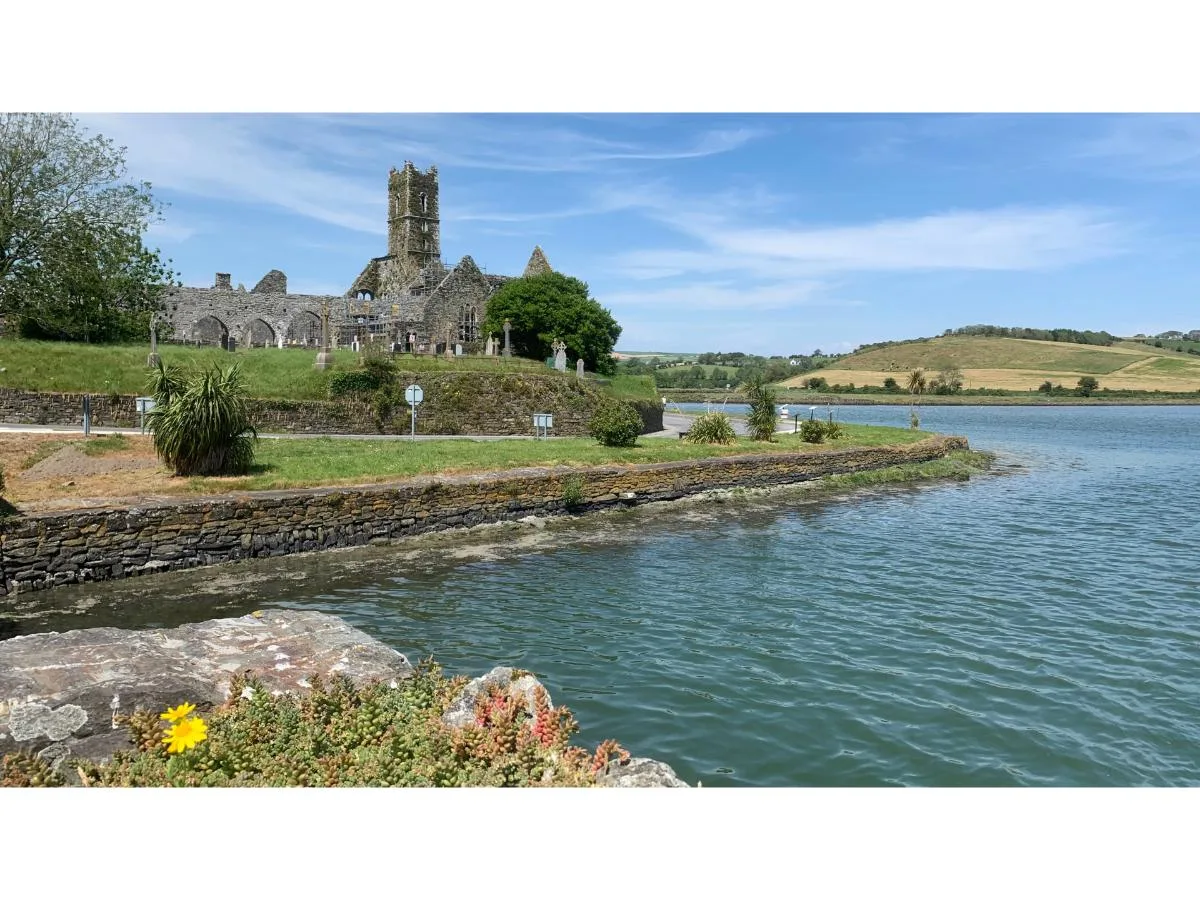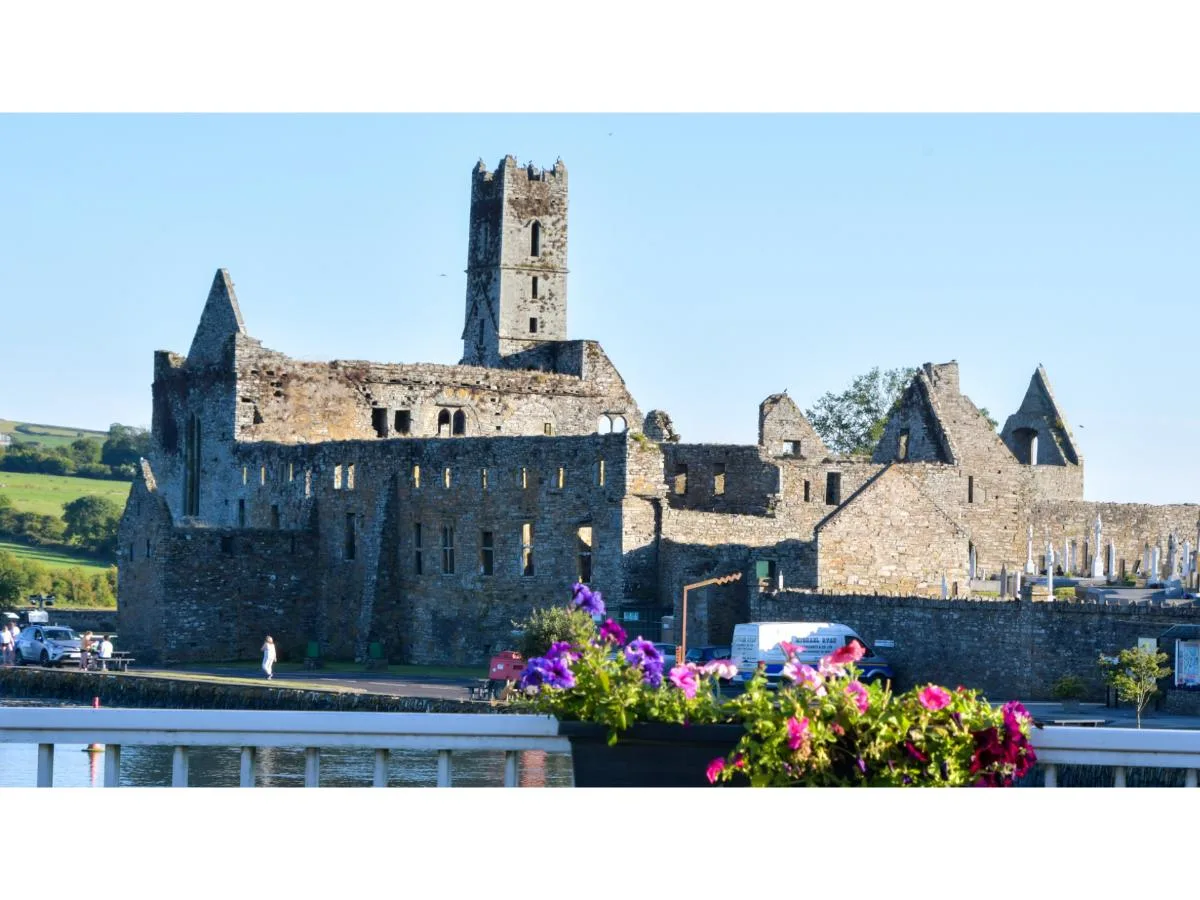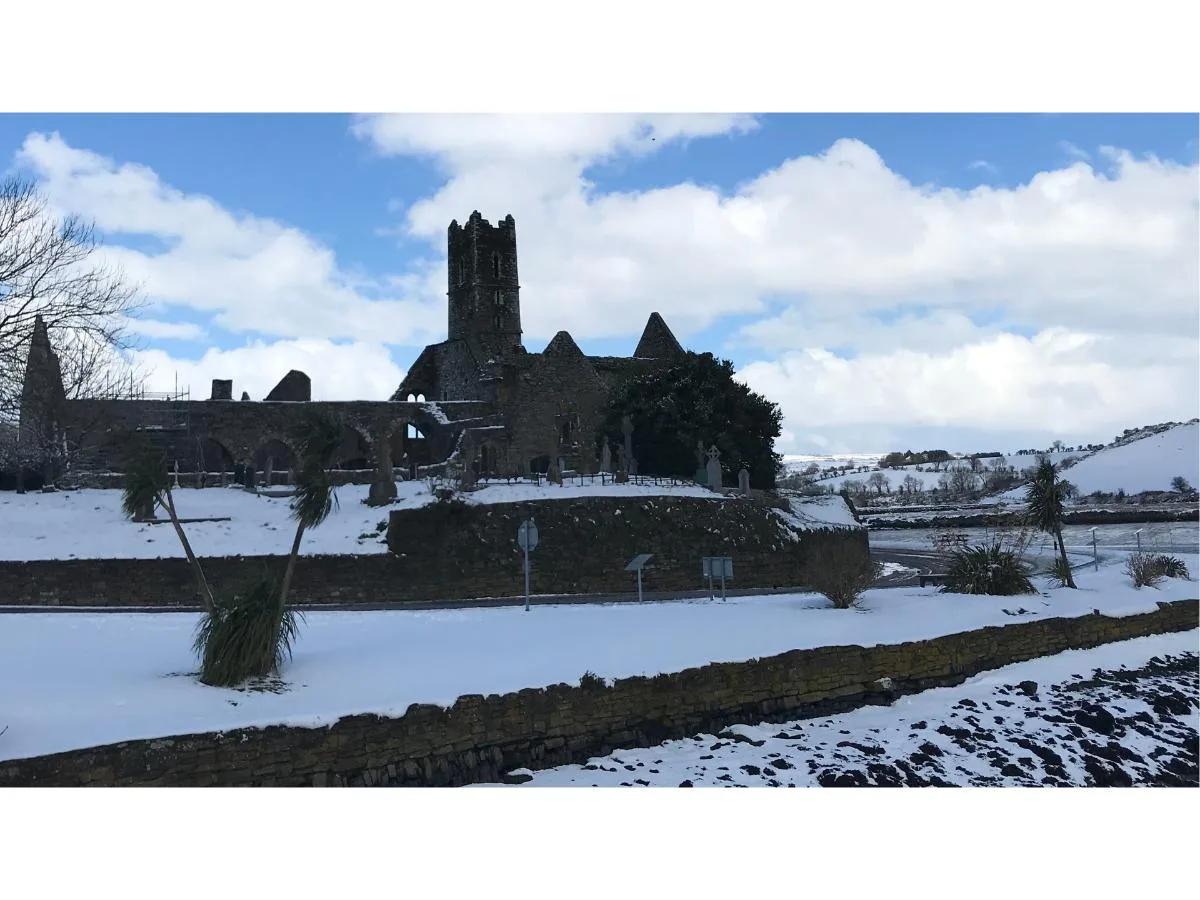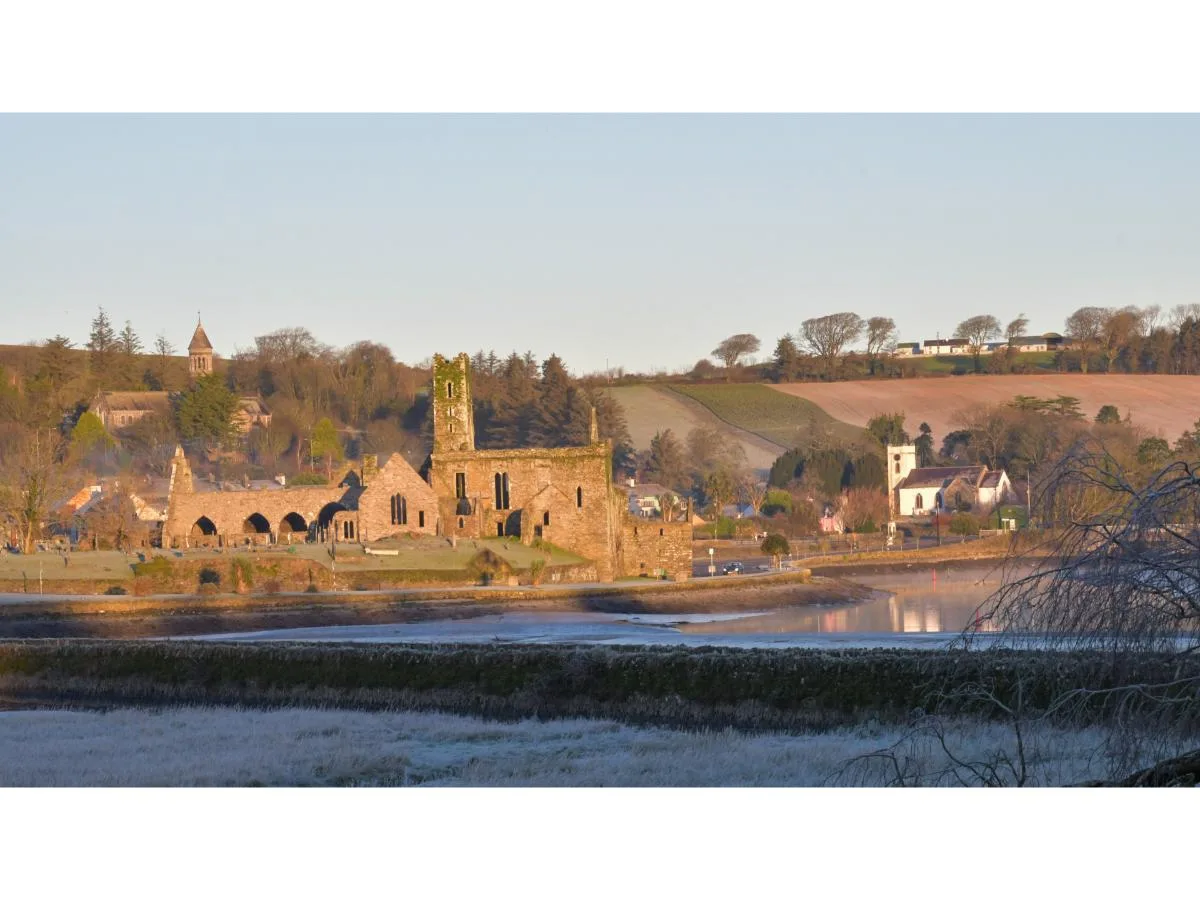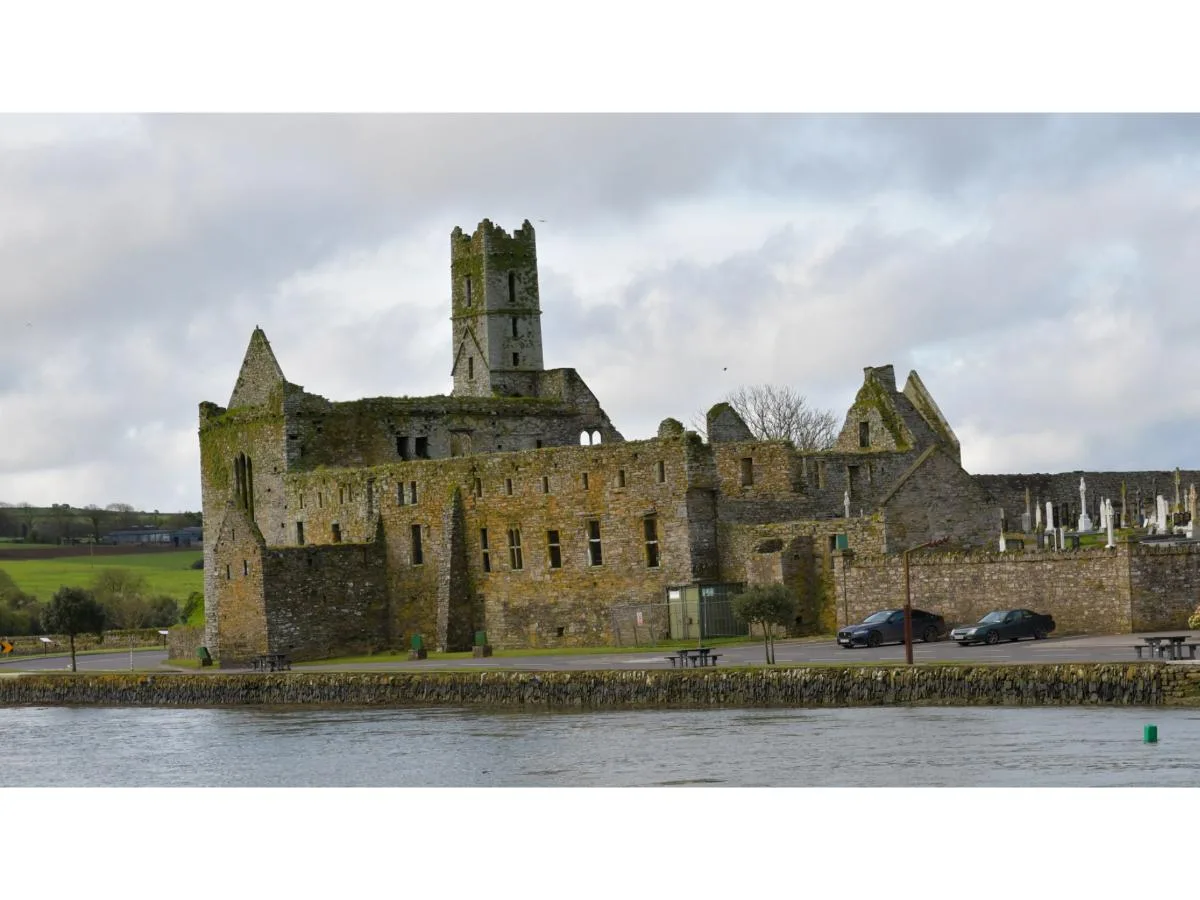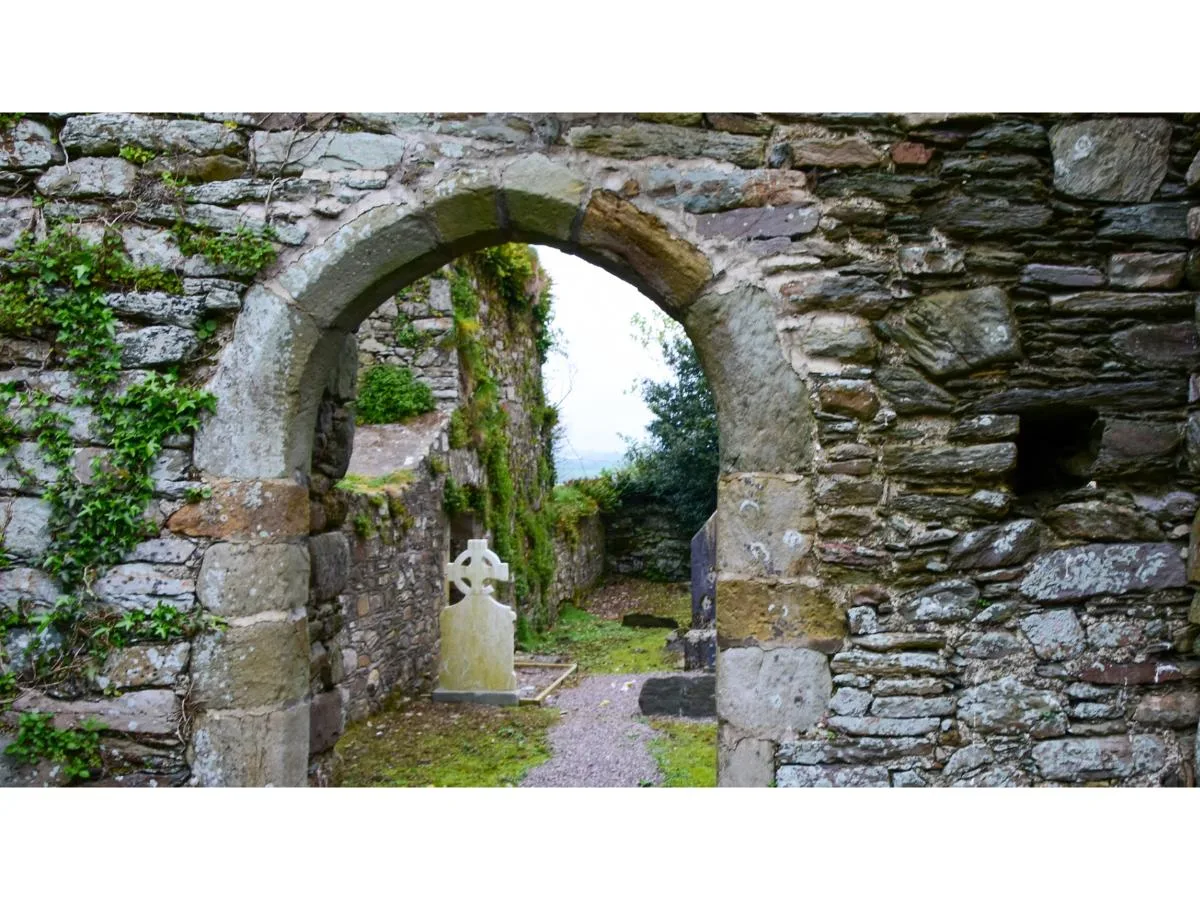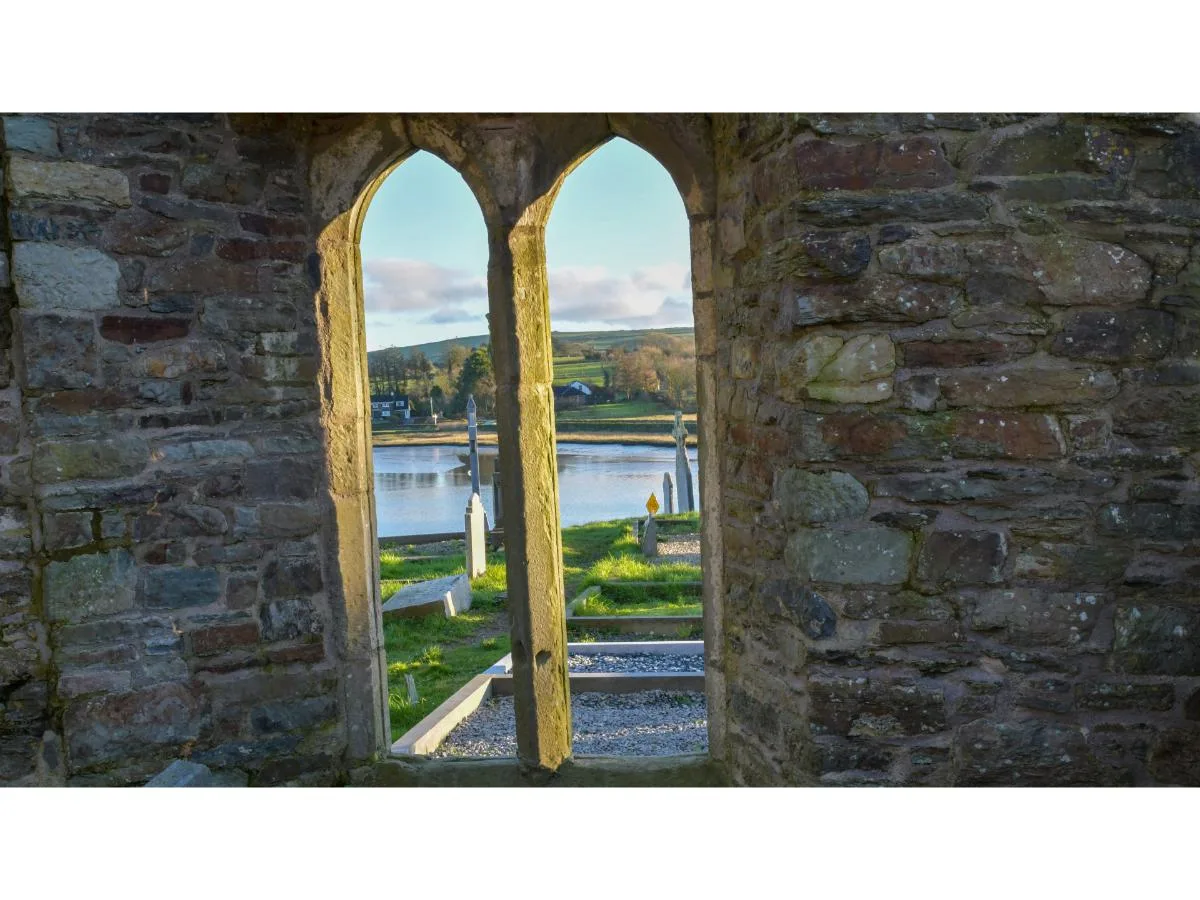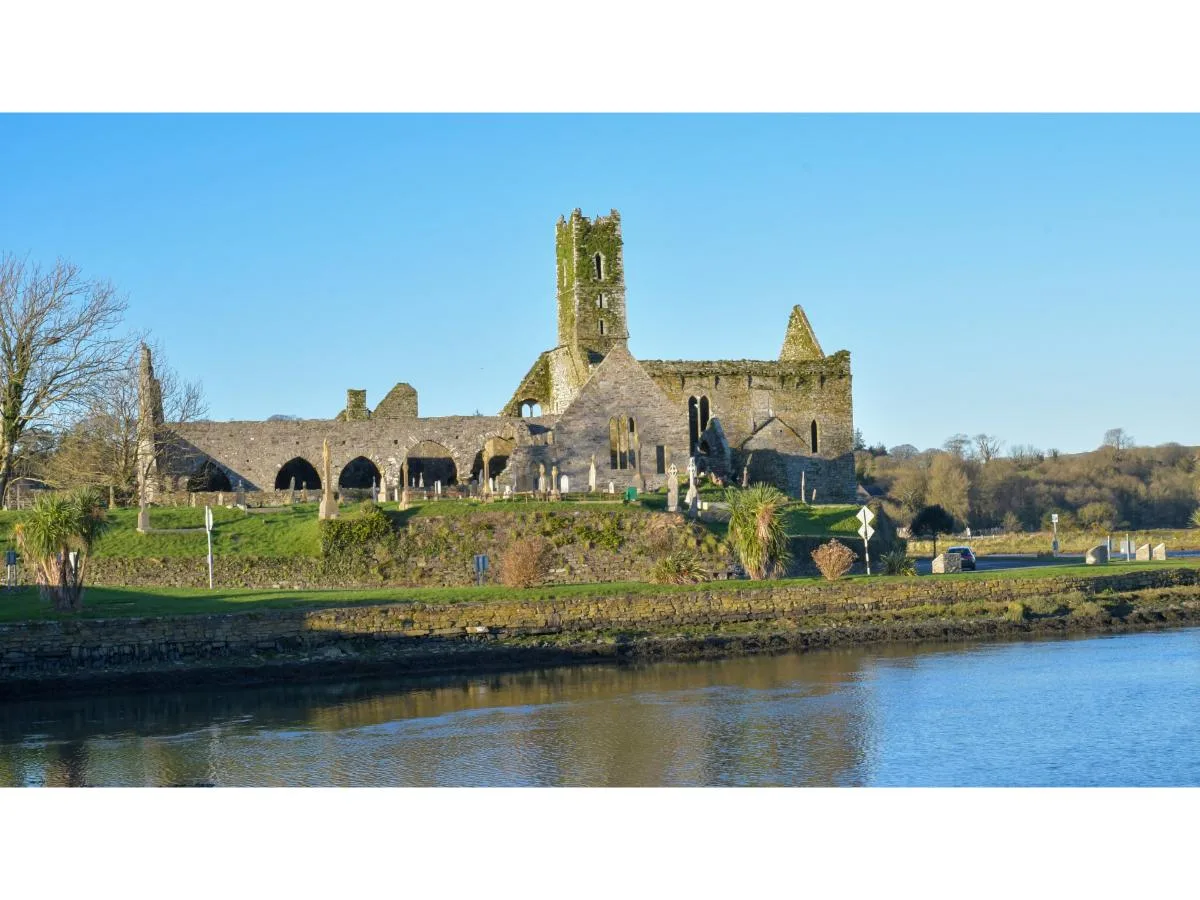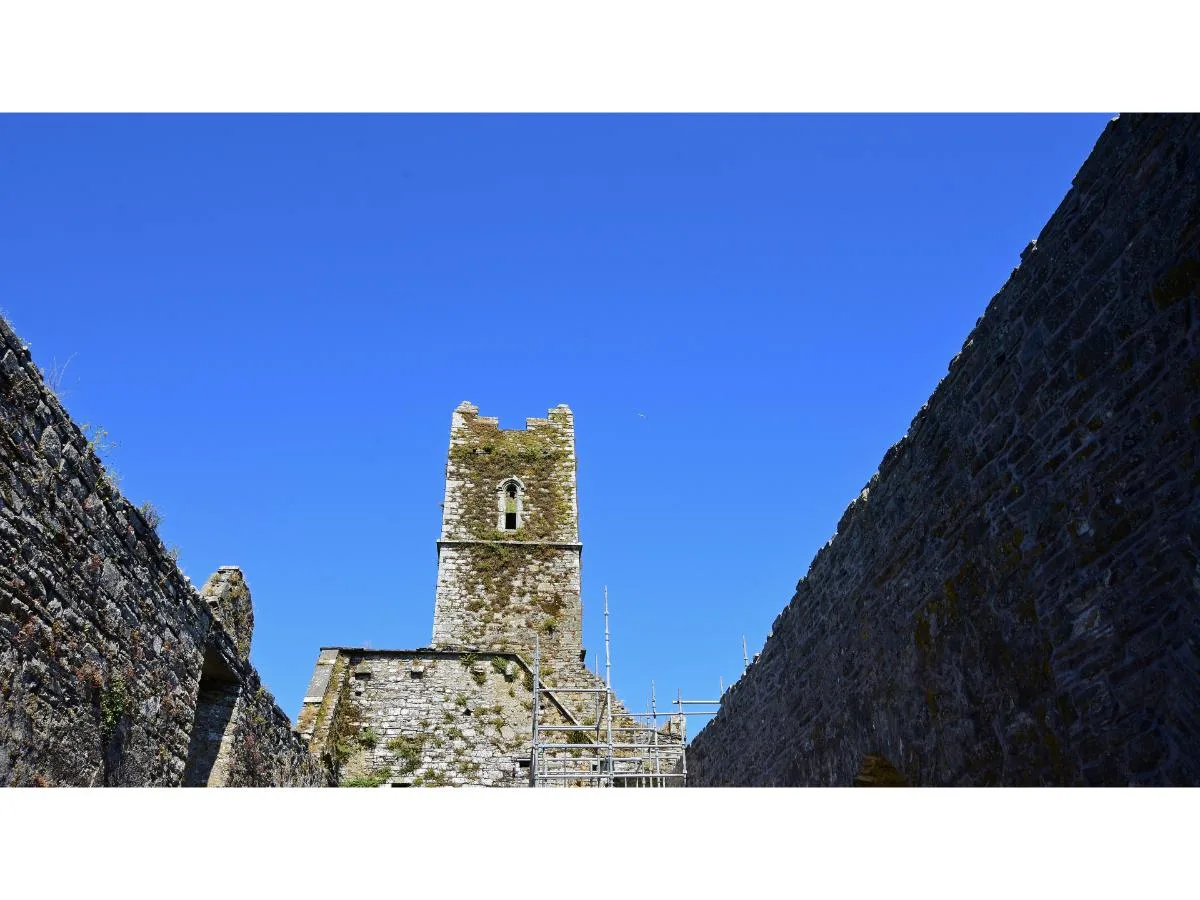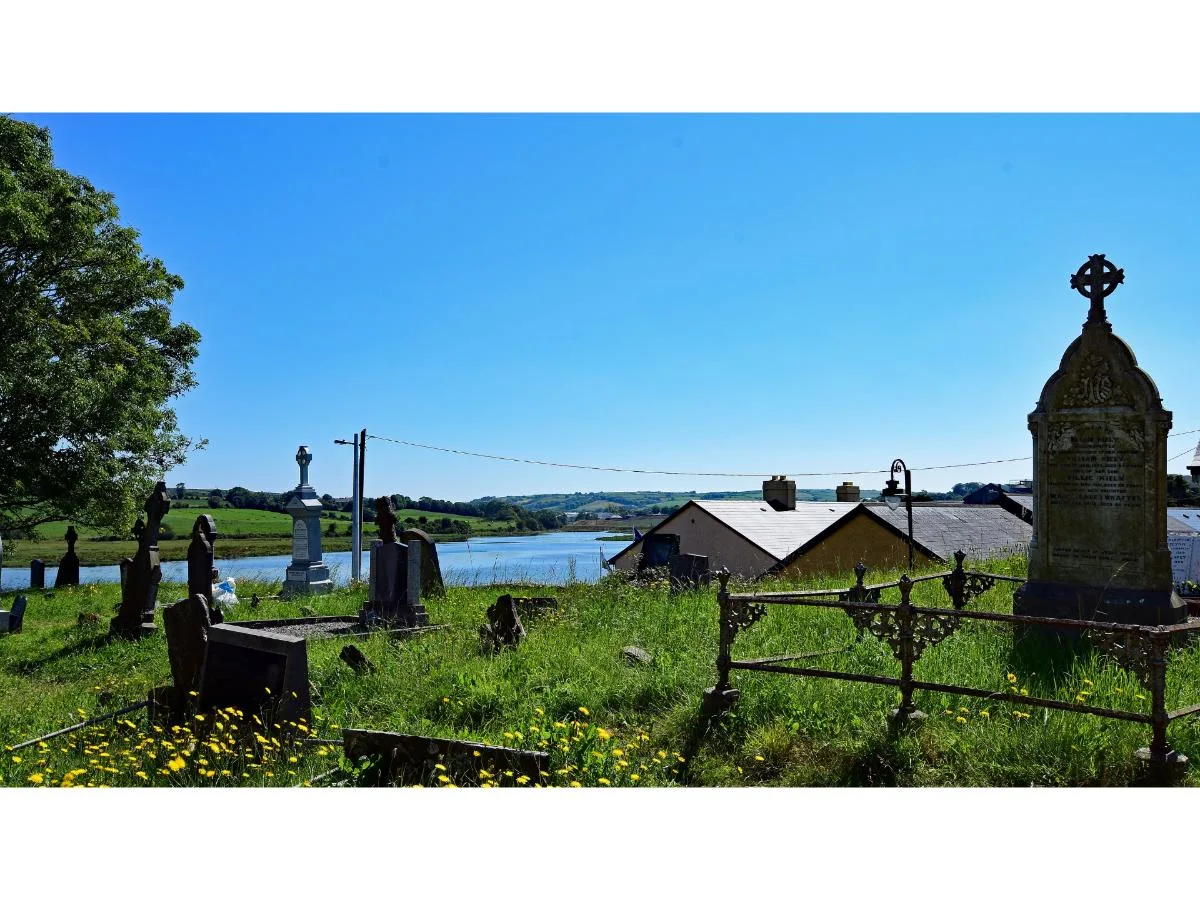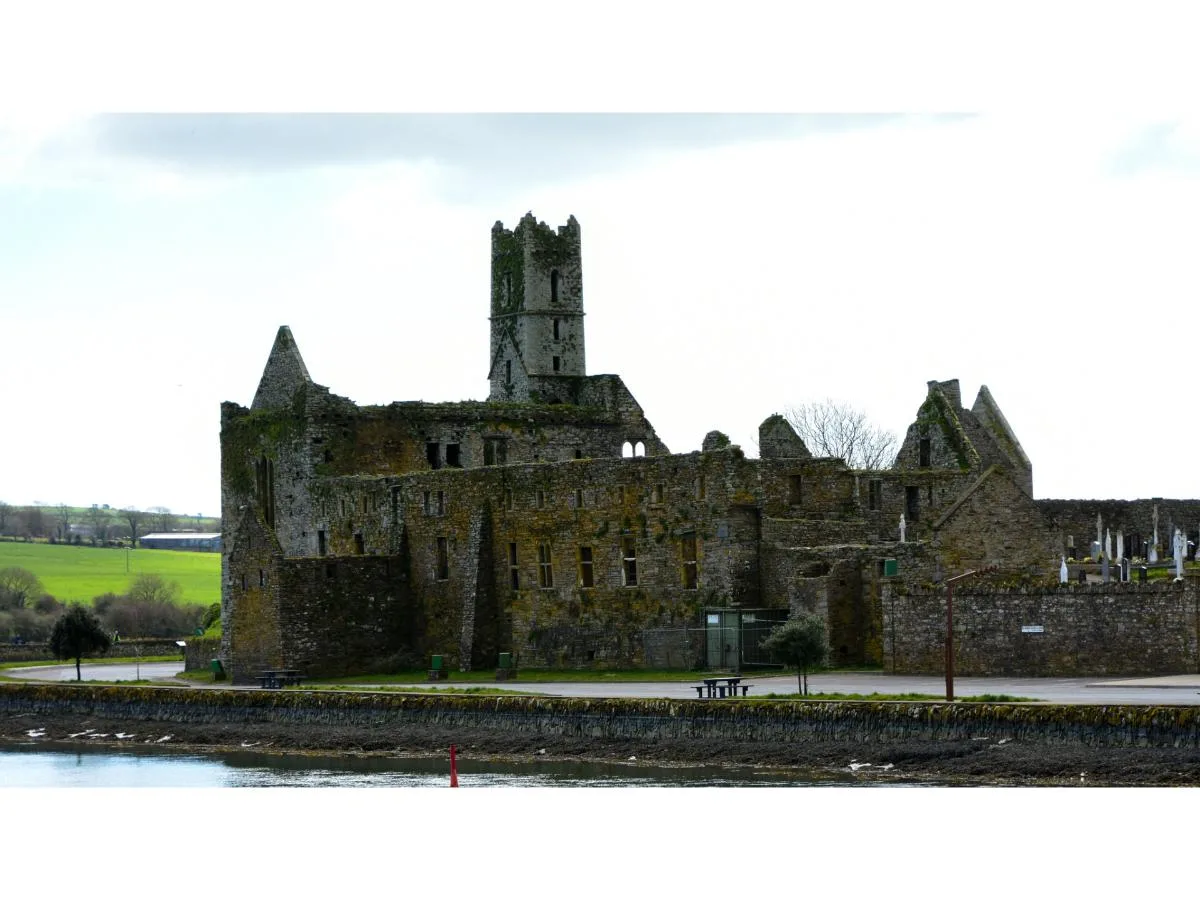Timoleague Abbey
Timoleague Abbey’s ancient ruins meet the peaceful River Arigideen, weaving history into a breathtakingly serene scene.
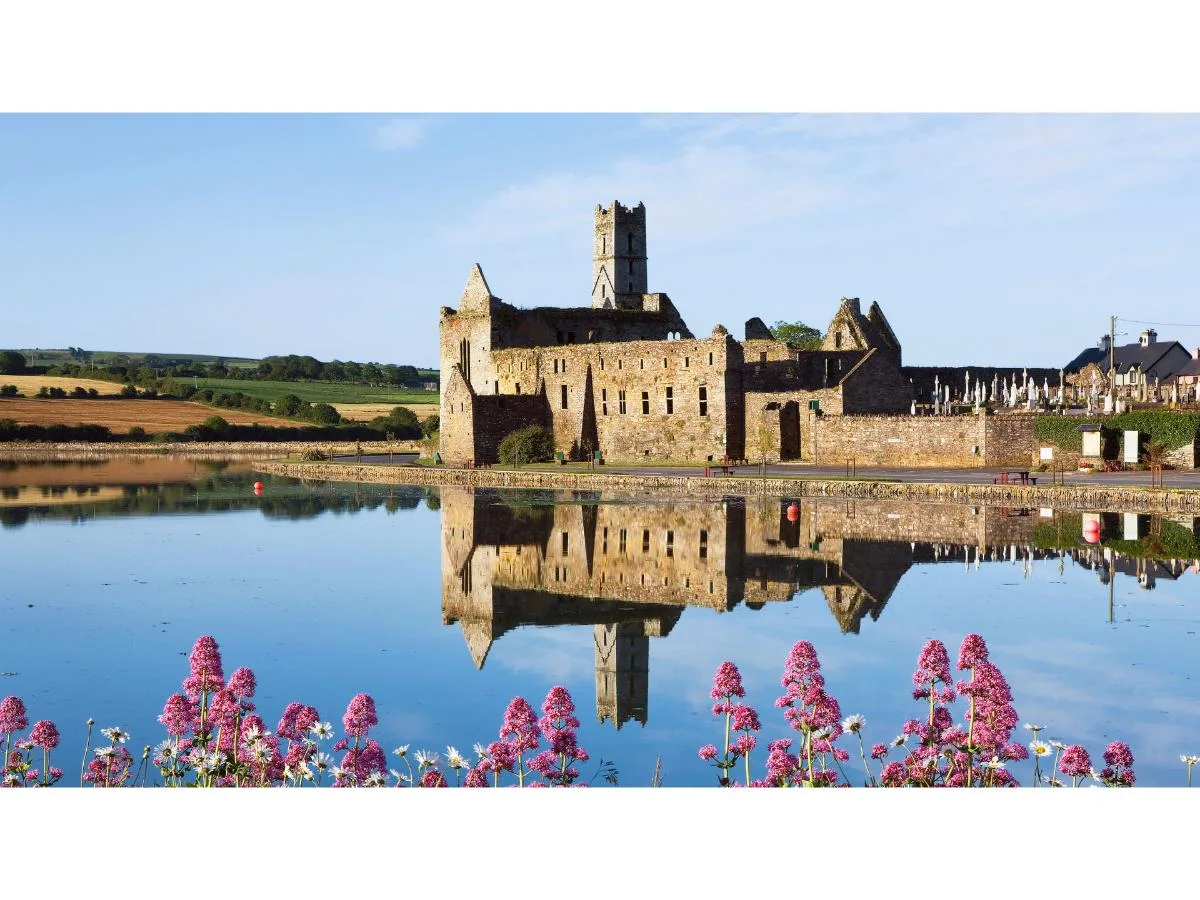
- Free Car Parking
- |
- Family Friendly
- |
- Free to visit
Timoleague Abbey
Timoleague Abbey is a 13th-century Franciscan Abbey in Timoleague village on the south coast of County Cork near Courtmacsherry. The abbey was founded in c. 1300 on the site of a 6th-century monastic settlement founded by Saint Molaga, after whom the village is named—the Irish for “House of Molaga” is ‘Tigh Molaga’.
The information plaques at the site read as follows:
“The friary was founded in the late 13th or early 14th century. The Franciscan friars who lived here devoted themselves to the strict rules of poverty and simplicity laid down by St. Francis. Hence, the architectural details of the building are pretty plain. The earliest church was smaller than the present one but was extended when the tower was built in about 1500 by the Franciscan Bishop of Ross, Edmund de Courcy. On the west side of the cloister was the kitchen, and at the northeast side, a dining room with five windows overlooking the sea.
After the reformation, some friars returned to Timoleague and lived there on and off until 1642, when English soldiers burned the friary and town under Lord Forbes.”
Timeline Of The History Of Timoleague Abbey
as detailed by the OPW plaque at the site
- c1300 – Founded by the Franciscans on the site of an ancient monastery of St. Molga. Endowed by the Barrys and the McCarthys who are buried here.
- 1480 – Book of MacCarthaigh Riabhach of Kilbrittain otherwise known as the Book of Lismore written here.
- 1495 – Edmund DeCourcey O.F.M., Bishop of Clogher, became Bishop of Ross resided here: built the tower, dormitary, infirmary and library.
- 1601 – Battle of Kinsale: friary under threat from both sides as some of the Barrys and the McCarthys joined Hugh O’Neill’s rebellion while others remained loyal to Queen Elizabeth.
- 1603 – Burial of Eoghan MacEgan , bishop-elect of Ross, killed in battle against the forces of the Queen.
- 1620 – School of Philosophy established.
- c1633 – Timoleague Chalice made in London, later lost but re-discovered in cape Clear in the 1850s: still in use.
- 1639 – Visit of Michael O’Cleiraigh, one of the Four Masters, to copy from the Book of Lismore.
- 1642 – Burned down by Cromwellian forces.
- 1813 – Sean O’Coileain wrote the poem Machnamh an Duine Dhoiliosaigh (Caoineadh Thigh Molaige) Reflections of the Melancholy Person (Lament for Timoleague) lamenting the destruction of the friary.
Source: Wild Atlantic Way website
The Place
Timoleague Franciscan Friary is located in a village on the bank of the River Argideen overlooking Courtmacsherry Bay. It was built on the site of an earlier church dedicated to St Molaga, whose feast was celebrated here until the seventeenth century. The friary’s foundation has been attributed to Domhnall Got MacCarthy (d. 1252) in 1240 and William de Barry (d. 1373), with his wife Margery de Courcy, in the early fourteenth century. The extensive remains incorporating the church, domestic ranges, and a sally port were built in the thirteenth and fourteenth centuries, with additions built in the fifteenth and seventeenth centuries.
The People
Domhnall Got MacCarthy (d. 1252) founded the MacCarthy Reagh dynasty of Carbery in West Cork and was king of Desmond (Cos Cork and Kerry) from 1247 until his death. He was a younger son of Domnall Mór MacCarthy, king of Desmond (r. 1185-1206). He established a firm power base in the region known as Carbery in southwest Cork, where Timoleague is located.
Despite the extension of the Anglo-Norman lordship in West Cork, Domhnall managed to maintain power and land in the area and was named as one possible founder of the Franciscan friary in 1240. His grandfather Diarmait had founded the Cistercian abbey of Abbeymahon, located initially at Aghamanister, about two kilometers south of Timoleague. That abbey was moved to its new site before 1278 when Domhnall Got’s son Diarmait was buried there.
The de Barrys, a prominent Anglo-Norman magnate family of Co Cork, owned Timoleague from 1229. William de Barry (c. 1297-1373) was granted his family’s land of West Cork in the first half of the fourteenth century and founded the Barry Roe lordship. William and his wife Margery de Courcy (d. 1373) are named founders and buried in the friary. Domhnall Got’s great-grandson Domhnall Glas (d. 1366), lord of Carbery, who was also buried in the friary, may have been another patron. The friary became the burial place of the MacCarthy Reaghs in the late medieval period and probably housed the great Irish manuscript known as the Book of Lismore or the Book of Mac Cárthaigh Riabhach (MacCarthy Reagh) in its library.
Why Visit?
Timoleague is worth visiting as one of the few early Franciscan foundations with extensive remains in Ireland. It lies within a very picturesque landscape, beside a small but colorful village of medieval origin and overlooking the river Argideen’s estuary and Courtmacsherry Bay. The buildings present many exciting features and intriguing quirks, such as the mysterious wall passages and the tall arches on each side of the choir. Also of note is the fifteenth-century inserted tower, a typical example of a Franciscan bell tower. The cellars in the east range are another notable feature: one leads down to an outbuilding that would have opened directly onto the river, allowing ships to deliver fish or other goods to the friary.
How to find us
Contact Details
